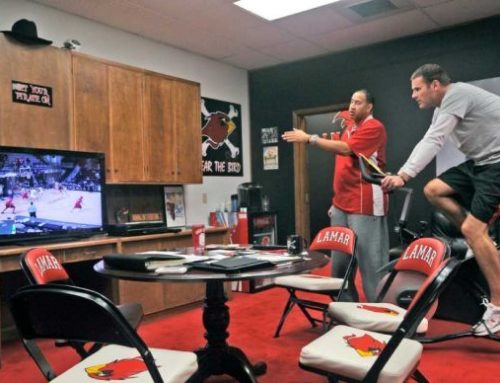A basketball team can only be good in games if the players are good in practice. Like for everything in life, preparation for players and coaches is key to building a successful team. People usually get caught up in examining game stats in order to analyze how their team is playing, but there are numerous factors that could skew the numbers and distort the image of a player, or the whole team. The other team might simply be better, or they had a defensive scheme which prevented your best player from putting up numbers. Keeping stats in practice can eliminate these variables because of a much bigger sample size, and give the coaching staff a clearer picture of what kind of personnel they have. But is this approach entirely beneficial? Well… almost. Let’s take a look at what stat keeping at practice brings to the team.
First of all, it simulates the in-game experience. Players are usually highly motivated when the staff keeps practice stats and want to present themselves as useful parts of the team. Therefore, more players will crash the boards, run the transition to get easy points, or dish out to an open man to get an assist. If a team practices with high intensity, there will be no doubt if they are ready for the pressure of actual games. By examining these stats, coaches will have a clear picture of who tries the hardest in practice and reward them with extra playing time. Sometimes it is difficult to see the impact of a certain player because he is deep in the rotation, but through practice stats the coaching staff can see what every player is able to do when the workload is increased. The stats can show player deficiencies too. If a player turns it over too much in practice, it will be likely that he/she will do the same thing in high stakes games. Coaches can use that information to either help the player work on the thing that they struggle with, or make an informed decision in making a change to the game plan. By using practice stats, that decision is made in time. Better be safe than sorry!
Keeping practice stats is not just reserved for traditional stats like points, rebounds, and assists. Development of technology has allowed coaches to use apps for stat keeping which can focus on advanced analytics. By tracking the effective field goal percentage or true shooting percentage in practices, coaches can conclude who their most effective players are, and not just who scores the most points in practice. It is important not to get seduced by the traditional numbers, as they can be a result of a selfish brand of playing basketball. Keeping stats in practice can also be focused on parts of the game that aren’t even in the box score. If you are working on a particular part of the game in practice, you can try keeping stats on that area and use it to explain to the players what they are doing right or wrong. For example, if your team is struggling to get defensive rebounds, you can count the times defense boxed out and didn’t allow anyone in the paint. If the team is struggling to create open shots, you can count the paint touches during one possession, as it pulls the defense towards the paint and creates more spacing. While that is a lot of information to process in such a small time frame, assistant coaches can be given different assignments on what to focus on. After all, that’s why they are so important to a team’s success.
There are some important things that coaches need to be careful about when keeping stats in practice. Although it gives a lot of data to the staff about the team, that data should be only used by them and not the players. If they are constantly having access to the statistics, some of them might focus more on that than on the team’s goal, which could derail your practices. A solution to this could be to discuss practice stats with the players only when it is necessary to demonstrate a point. There is no need for anyone to know how much they are scoring per practice, because it could lead to potential chemistry issues, and we all know that the team is the most important thing. Coaches also have to keep in mind that not all players perform the same in practices and in games. Some players excel in a low pressure environment, but perform terribly in games when the pressure is on. It is on the coaching staff to know the personalities of their players and use practice stats in according to that.
Ultimately, keeping stats in practice is definitely beneficial. Although there are some risks when using this method, the potential improvements of the team are so big that the risk is definitely worth it. They give an image of a professional team who approaches practices with the same mentality as they do games. It helps coaches prepare better for their opponents, and better improve their players. After all it is true what they say: Practice makes it perfect!





